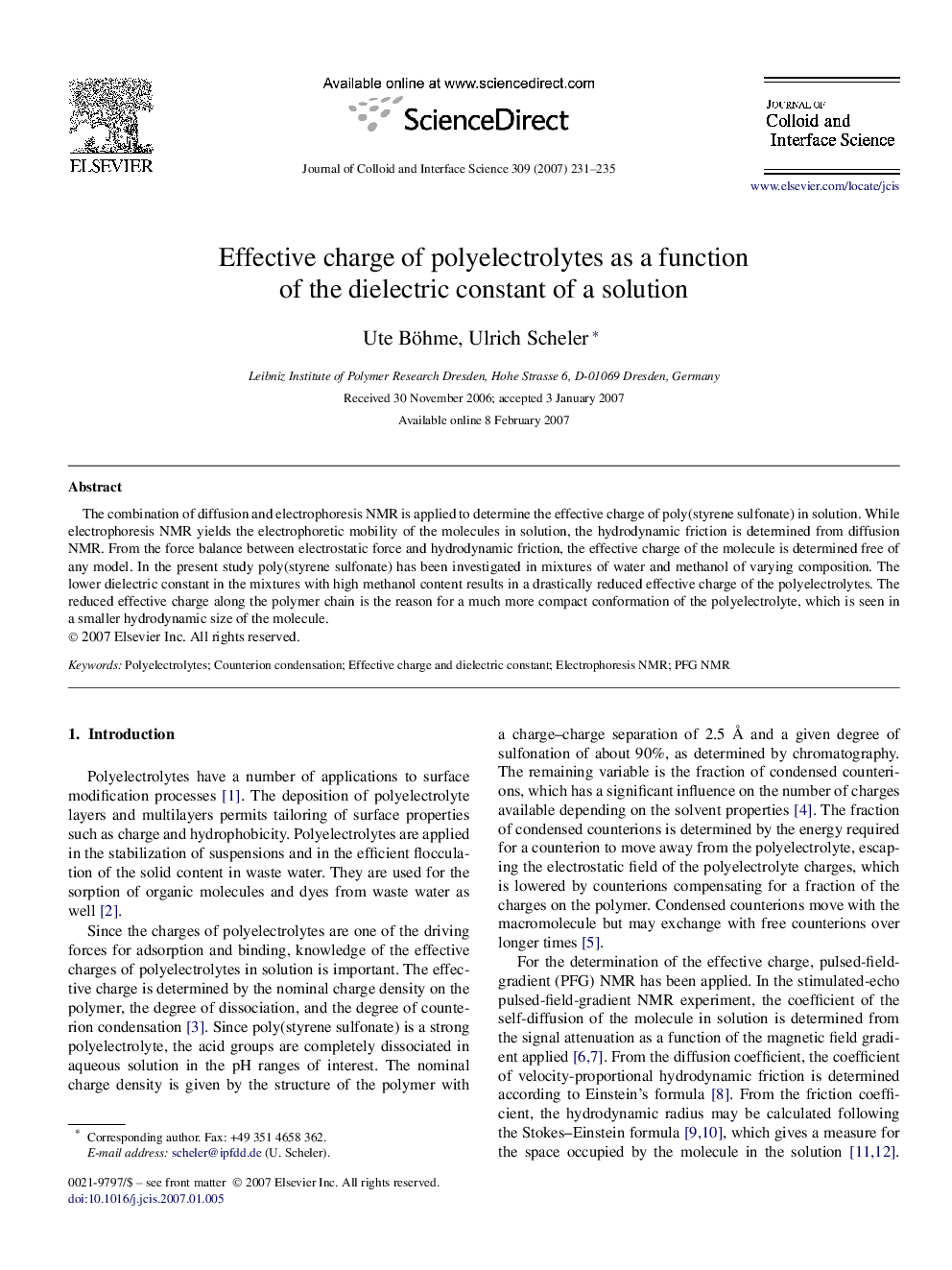| Article ID | Journal | Published Year | Pages | File Type |
|---|---|---|---|---|
| 612351 | Journal of Colloid and Interface Science | 2007 | 5 Pages |
The combination of diffusion and electrophoresis NMR is applied to determine the effective charge of poly(styrene sulfonate) in solution. While electrophoresis NMR yields the electrophoretic mobility of the molecules in solution, the hydrodynamic friction is determined from diffusion NMR. From the force balance between electrostatic force and hydrodynamic friction, the effective charge of the molecule is determined free of any model. In the present study poly(styrene sulfonate) has been investigated in mixtures of water and methanol of varying composition. The lower dielectric constant in the mixtures with high methanol content results in a drastically reduced effective charge of the polyelectrolytes. The reduced effective charge along the polymer chain is the reason for a much more compact conformation of the polyelectrolyte, which is seen in a smaller hydrodynamic size of the molecule.
Graphical abstractDecreasing the dielectric constant of a mixed solvent results in a decreasing effective charge of the polyelectrolyte in solution, which in turn brings the polyelectrolyte to a more compact conformation, as seen from the reduced hydrodynamic size.Figure optionsDownload full-size imageDownload as PowerPoint slide
